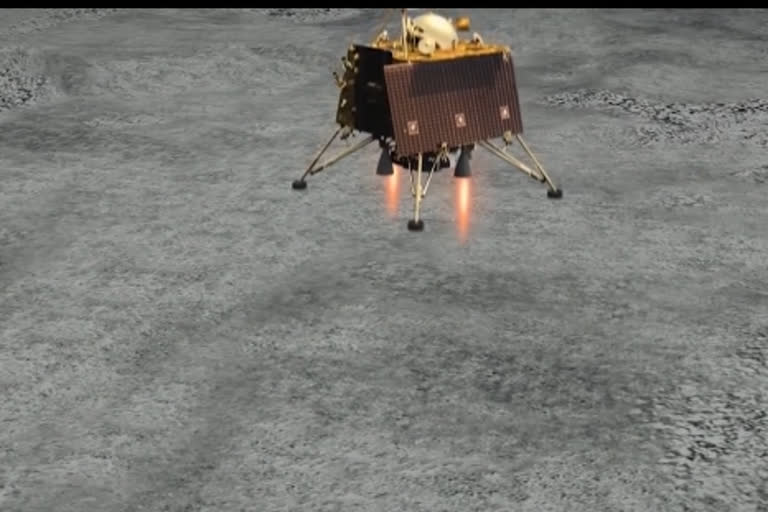Bengaluru: The crucial landing of 'Vikram', Chandrayaan-2's moon lander, will be carried out by at least eight onboard equipment in a coordinated manner. 'Vikram' with rover 'Pragyaan' housed inside is scheduled for a powered-descent between 1 am and 2 am on September 7, followed by its touchdown between 1.30 am and 2.30 am.
Ahead of the proposed touchdown in the early hours of Saturday, the ISRO explained through a video how it will take place.
The space agency explained that the machine will be fitted with at least three cameras, Lander Position Detection Camera (LPDC), Lander Horizontal Velocity Camera (LHVC) and Lander Hazardous Detection and Avoidance Camera (LHDAC), to ensure its soft landing on the lunar surface. There will be two KA Band Altimeter-1 and KA Band Altimeter-2, to measure the altitude of an object above a fixed level.
There will be a Laser Altimeter (LASA), an instrument that is used to learn about the topography, or the shape of the surface of a planet. It will operate through the orbitor revolving around the moon above the lander.
The lander will also have five 800N Liquid thruster engines, touchdown sensors and solar panels. During the rough braking Phase at an altitude of 100 km, the four engines on four sides of the cubical shaped lander will be switched on.
At this stage of the Absolute Navigation Phase, KA Band-1, Laser Altimeter and Lander Position Detection Camera will be activated to ensure that the lander is positioned in the space just above the moon surface to sit perfectly on the ground.
